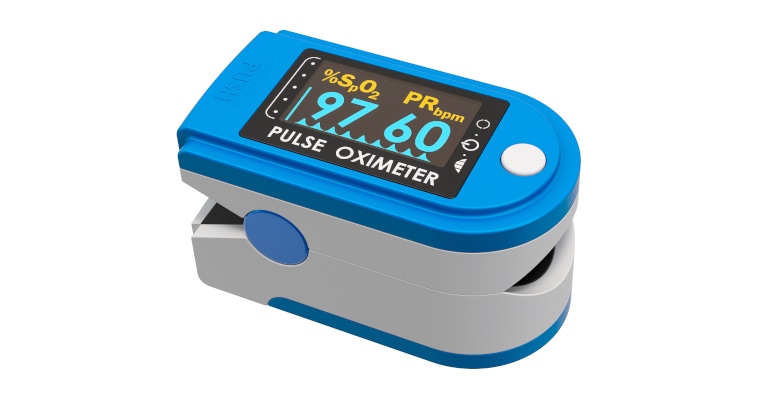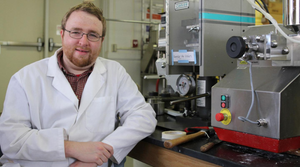Pulse oximeters’ inaccuracy highlights digital equity issues.
April 9, 2022

A recent study by researchers at the University of Nottingham in the United Kingdom reinforced a growing body of knowledge that not all blood oxygenation measurement devices, particularly pulse oximeters, are created equal. The study used data from patients of different ethnic groups with COVID-19 to look at the difference in blood oxygen levels as measured by pulse oximetry and arterial blood gas tests, the gold standard in oxygenation accuracy. The findings of the research, published in the European Respiratory Journal, showed pulse oximeters gave false readings of nearly 7 percent higher than actual levels in a group of patients of mixed ethnicity with COVID-19, compared with those of white patients at just over 3 percent. There were also false high readings in patients with both Black (5.4 percent) and Asian (5.1 percent) ethnicity.
The study results were just the latest in research going back more than 15 years demonstrating that pulse oximeters are often less accurate in people with darker pigment, yet little has been done to address the problem. In fact, the study’s lead author, Andrew Fogarty, M.D., was among those who had been unaware of the issue until fairly recently; it wasn’t until after a group of researchers from the University of Michigan published a letter in the New England Journal of Medicine in December 2020, leading to an updated safety communication from the FDA in February 2021, that Fogarty took notice of the problem.
“When the group from the University of Michigan published their work, it led to the FDA warning,” Fogarty said. “That was the first I knew of this. I’ve been a senior clinician for 17 years and pulse oximeters are one of the crutches of respiratory medicine. On a personal level, I found that quite humbling.”
A group of researchers headed by clinicians at the University of California at San Francisco’s Hypoxia Research Laboratory intimated that practitioners such as Fogarty were not alone in not being aware of the issue: citing a pioneering 2005 study by the lab, the researchers expressed disappointment such pigment-dependent disparities still existed in a device that has become increasingly pivotal in clinical and home settings: “Although there is renewed interest in this issue due to the high prevalence of hypoxemia in patients with COVID-19, it is disappointing that in over 15 years since this study the magnitude and clinical importance of these errors remain largely neglected,” they wrote in the February 2022 issue of Respiratory Care.
From Studies to Policy
The UCSF researchers are among a group including independent testing lab Clinimark, non-profit surgical safety advocacy Lifebox, and the OpenCriticalCare.org Project launching OpenOximetry.org. Representatives of the project did not respond to several requests for comment; however, the group’s web site lists short-term goals such as lab testing on humans to determine which existing oximeters work and which don’t; real-world human studies to characterize how some oximeters perform well in a lab setting but not in some patients in the clinical setting; and harmonization of efforts working to solve oximetry challenges across institutions, disciplines, and settings.
They have also released longer-term aspirations such as analyzing diverse datasets to provide insights that will help develop accurate, low-cost oximeters that perform safely in all patients and raising the bar for performance standards for oximeter certification that adequately account for the effects of skin pigment and perfusion.
Fogarty said he thought the updated FDA safety notice was pivotal in bringing inaccurate oximeter readings out into the open.
“And in the UK, we have a commission doing a similar evaluation of the issue,” he said. “So it’s gone from researchers showing there’s a problem to policymakers and governments working out what to do next. So I don’t think the problem will be ignored on either side of the Atlantic; it’s just a question of what happens next.”
An FDA spokesperson said the agency will continue to “evaluate available evidence pertaining to factors that may affect pulse oximeter accuracy and performance, including published literature that evaluates whether products may be less accurate in individuals with darker skin pigmentation” and will keep the public informed “as significant new information becomes available.”
“From a clinical perspective, increasing awareness is the important thing,” Fogarty said. “Then the doctors may do an arterial blood gas test, which is the gold standard, sooner in certain subgroups where the accuracy of the pulse oximeter is in question. In terms of the technology, I think that’s one for the medical engineering industry.”
Pulse Oximetry Just One Piece of the Puzzle
The Open Oximetry effort might fold into several larger efforts in the medical engineering community to validate and harmonize digital therapeutics; additionally, these efforts may also be benefiting from the even broader societal discussion around improving diversity, equity, and inclusion in all aspects of society. While Open Oximetry is focusing squarely on that technology, other organizations, such as the Digital Medicine Society (DiMe) and remote clinical trial and care platform vendor HumanFirst, are forming broader efforts at ensuring devices work properly across all demographics.
“They’re a little too narrowly focused for DiMe,” said Yashoda Sharma, program director for DiMe’s Digital Health Measurement Collaborative Community (Datacc). “They are definitely a group we could work with. Many of our different projects could have their perspective. I don’t see them taking away from what we do.”
In fact, the newly surfaced attention to oximeter accuracy issues may feed an overall view that medical technology needs to be developed with wider user bases in mind; for example, Sharma will direct a new DiMe project around improving diversity, equity, and inclusion in digitized clinical trials. The project will launch in April, Sharma said.
Manny Fanarjian, M.D., clinical operations leader at HumanFirst, said the medtech community would do well to take a lesson from the persistent problem of oximeter discrepancies and examine other device designs, especially in the context of the wider discussion around social justice and equity.
“I think it would be naive to say the cultural Zeitgeist will not impact what will get written and published,” Fanarjian said. “But this is a pretty well known inequity in healthcare technology for more than a decade. I guess the bigger message for me is, this is the one we know about. The bigger piece I think we ought to focus on as a medical and technical community is how do we safeguard ourselves against the ones we don’t know about?”
About the Author(s)
You May Also Like


